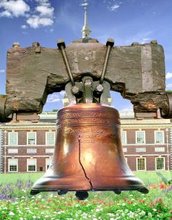Tuesday, May 16, 2017
The campaign to celebrate the nation’s
fathers did not meet with the same enthusiasm–perhaps because, as one florist
explained, “fathers haven’t the same sentimental appeal that mothers have.”
On July 5, 1908, a West Virginia church sponsored the
nation’s first event explicitly in honor of fathers, a Sunday sermon in memory
of the 362 men who had died in the previous December’s explosions at the
Fairmont Coal Company mines in Monongah, but it was a one-time commemoration and
not an annual holiday.
The next year, a Spokane, Washington, woman named Sonora Smart Dodd, one of six
children raised by a widower, tried to establish an official equivalent to
Mother’s Day for male parents. She went to local churches, the YMCA, shopkeepers
and government officials to drum up support for her idea, and she was
successful: Washington State celebrated the nation’s first
statewide Father’s Day on June 19, 1910.
Slowly, the holiday spread. In 1916, President
Wilson honored the day by using telegraph signals to unfurl a flag in Spokane
when he pressed a button in Washington,
D.C. In 1924, President Calvin Coolidge urged state governments to observe Father’s Day.
Today,
the day honoring fathers is celebrated in the United States
on
the third Sunday of June: Father’s Day 2017 occurs on June 18; the following
year, Father’s Day 2018 falls on June 17.
In other countries–especially in Europe and
Latin America–fathers are honored on St. Joseph’s Day, a traditional Catholic
holiday that falls on March 19.
Many men, however, continued to disdain the
day. As one historian writes, they “scoffed at the holiday’s sentimental
attempts to domesticate manliness with flowers and gift-giving, or they derided
the proliferation of such holidays as a commercial gimmick to sell more
products–often paid for by the father
himself.”
During the 1920s and 1930s, a movement arose to
scrap Mother’s Day and Father’s Day altogether in favor of a single holiday,
Parents’ Day. Every year on Mother’s Day, pro-Parents’ Day groups rallied in
New York City’s Central Park–a public reminder, said Parents’ Day
activist and radio performer Robert Spere, “that both parents should be loved
and respected together.”
Paradoxically, however, the Great Depression derailed this effort to combine and de-commercialize the
holidays. Struggling retailers and advertisers redoubled their efforts to make
Father’s Day a “second Christmas” for men, promoting goods such as neckties,
hats, socks, pipes and tobacco, golf clubs and other sporting goods, and
greeting cards.
When World War
II began, advertisers began
to argue that celebrating Father’s Day was a way to honor American troops and
support the war effort. By the end of the war, Father’s Day may not have been a
federal holiday, but it was a national
institution.
In 1972, in the middle of a hard-fought
presidential re-election campaign, Richard Nixon signed a proclamation making Father’s Day a
federal holiday at last. Today, economists estimate that Americans spend more
than $1 billion each year on Father’s Day
gifts.

